When you are busy in your day’s business you require foods and foods alone that shall supply your body with nutrients that will keep you charged. Protein containing foods are very important foods for human health. These provide body with all the raw materials necessary for manufacture of energy in the body.
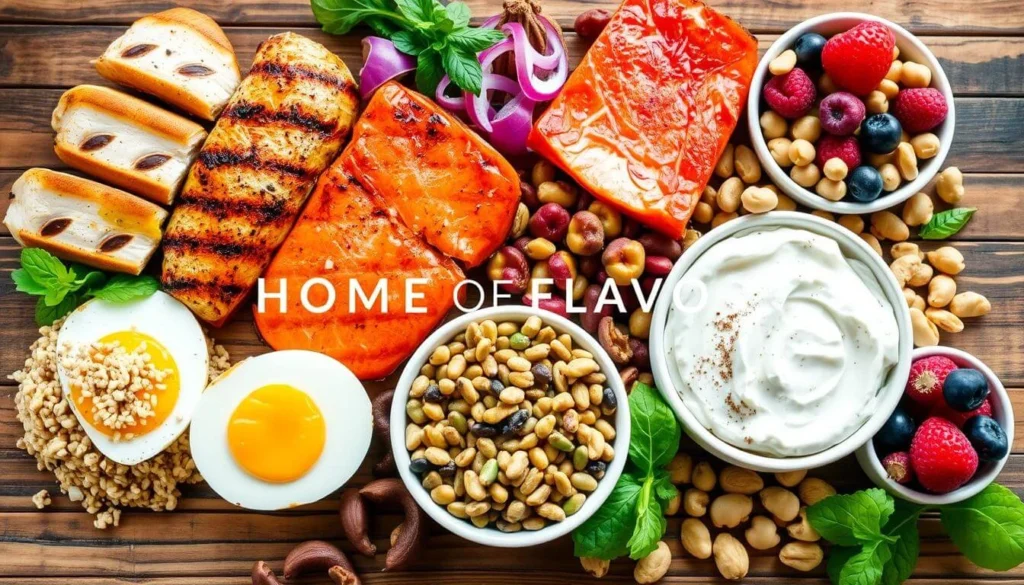
Protein is one of the well-known macronutrients needed in the diet to supply muscle energy for extended periods and perform other important roles as a component of the body tissue, an immunity booster, enzyme base, as well as a participant in the process of tissue repair.
Regardless of whether you are a sportsman or an active working person, or an ordinary man who is just conscious about his health and wants to maintain the proportions of his meals, then you should include protein materials into your diet.
This article gives details on which foods are rich in protein, their health effects, and some golden nuggets on how to include proteins in your daily diet.
The Role of Protein in Boosting Energy
What Protein Does for Your Body
Protein is often called the “building block” of the body, and for good reason. It’s composed of amino acids, which are essential for repairing tissues, building muscles, and creating the enzymes and hormones that regulate bodily processes. The body requires protein to produce neurotransmitters, enzymes, and antibodies, all of which support various functions like digestion, brain function, and immune response. In addition to these critical functions, protein plays a vital role in energy production. It helps create a steady supply of energy, enabling you to stay active, alert, and focused throughout the day.
How Protein Supports Energy Levels
Unlike carbohydrates, which offer a quick burst of energy, protein is digested more slowly, providing a longer-lasting, stable source of energy. This slow release of energy is key to preventing the mid-afternoon slumps or fatigue that often follows a carb-heavy meal. By opting for protein-rich foods, you help your body maintain consistent energy throughout the day, making it easier to power through both mental and physical tasks without feeling sluggish.
Protein vs. Carbohydrates for Energy
Carbohydrates are the body’s primary source of quick energy, but they can also cause blood sugar spikes and crashes. This can lead to feelings of fatigue and irritability. A combination of protein and carbs—such as an apple with almond butter or a whole grain sandwich with turkey—provides a more balanced energy boost. Protein helps stabilize blood sugar levels, preventing the dreaded energy dip that often follows a carb-heavy snack or meal.
Top Animal-Based Foods High in Protein
Eggs: The Complete Protein Package
Eggs are a protein powerhouse, offering about 6 grams of protein per large egg. In addition to protein, eggs are rich in healthy fats, vitamins (like B12), and minerals, making them a nutrient-dense food. They also contain all nine essential amino acids, making them a complete protein source. Eggs are versatile, affordable, and easy to prepare—whether you’re scrambling them for breakfast, boiling them for a snack, or poaching them for a nutritious meal.
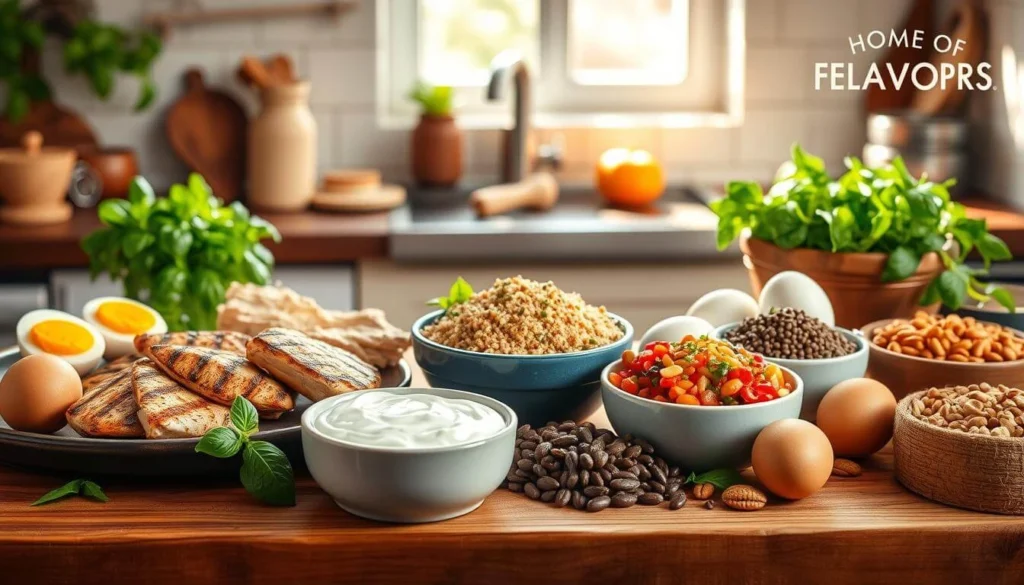
Lean Meats: Chicken Breast, Turkey, and Beef
Lean meats are among the best animal-based sources of high-quality protein. A 3-ounce serving of skinless chicken breast contains approximately 26 grams of protein, while lean cuts of turkey and beef offer a similar protein profile. These meats are not only high in protein but also low in fat, especially when cooked using healthy methods like grilling, baking, or broiling. Lean meats are an excellent option for boosting protein intake while keeping saturated fat levels in check.
Fish and Seafood: Tuna, Salmon, and Shrimp
Fish such as tuna and salmon are not only excellent sources of protein but also rich in omega-3 fatty acids, which have been shown to support brain health, reduce inflammation, and promote cardiovascular health. A 3-ounce serving of salmon provides about 22 grams of protein, while shrimp offers approximately 20 grams of protein per 3-ounce serving. Seafood is also generally low in calories, making it an ideal protein option for those looking to manage their weight while still receiving optimal nutrition.
Dairy Products: Greek Yogurt, Cottage Cheese, and Milk
Dairy products are another rich source of protein. Greek yogurt, in particular, is known for its high protein content—providing 10 to 20 grams per serving. It’s also a great source of probiotics, which support digestive health. Cottage cheese is another protein-packed dairy option, with roughly 14 grams of protein per half-cup serving. Milk, whether it’s cow’s milk or a fortified plant-based alternative, offers 8 grams of protein per cup, making it a versatile addition to smoothies, coffees, or snacks.
Best Plant-Based Foods High in Protein
Legumes: Lentils, Chickpeas, and Black Beans
Legumes are a staple in plant-based diets due to their high protein and fiber content. One cup of cooked lentils offers around 18 grams of protein, making them a great addition to soups, stews, and salads. Chickpeas and black beans also pack a solid protein punch, with roughly 15 grams per cooked cup. These legumes are also rich in fiber, which supports digestive health and helps maintain a steady energy supply by preventing blood sugar spikes.
Nuts and Seeds: Almonds, Chia Seeds, and Pumpkin Seeds
Nuts and seeds are energy-dense, offering a great combination of protein, healthy fats, and fiber. A 1-ounce serving of almonds provides 6 grams of protein, while chia seeds and pumpkin seeds contain around 5 grams of protein per ounce. Nuts and seeds are easy to incorporate into meals and snacks—add them to smoothies, sprinkle them on salads, or enjoy them as a standalone snack. They provide long-lasting energy, making them ideal for a midday pick-me-up.

Soy-Based Products: Tofu, Tempeh, and Edamame
Soy-based products are complete proteins, containing all nine essential amino acids. This makes tofu, tempeh, and edamame excellent options for vegetarians and vegans seeking to meet their protein needs. A 3-ounce serving of tempeh contains about 21 grams of protein, while tofu offers roughly 10 grams per 4-ounce serving. Edamame, young soybeans, make for a great snack and provide about 17 grams of protein per cup when cooked.
Quinoa: The Protein-Packed Grain
Quinoa stands out among grains because it is a complete protein, offering all nine essential amino acids. A cup of cooked quinoa provides 8 grams of protein, making it an excellent base for grain bowls, salads, and side dishes. Quinoa is also rich in fiber, B vitamins, and minerals like magnesium, which contributes to overall health and energy levels.
How to Incorporate Protein-Rich Foods Into Your Diet
High-Protein Breakfast Ideas
- Egg Scramble with Veggies: Scramble eggs with spinach, bell peppers, and mushrooms for a hearty, protein-packed breakfast.
- Greek Yogurt Parfait: Layer Greek yogurt with your favorite fruits, granola, and chia seeds for a sweet and satisfying start to your day.
- Protein Smoothies: Blend a scoop of protein powder with almond milk, banana, and peanut butter for a quick, on-the-go breakfast.
Quick Protein Snacks for On-The-Go
- Kefir and Edamame: A glass of kefir paired with edamame offers both protein and probiotics for digestive health.
- Trail Mix: Combine nuts, seeds, and dried fruit for a portable, energy-boosting snack that’s high in protein and healthy fats.
- Hard-Boiled Eggs: Prep a batch of hard-boiled eggs at the beginning of the week for a convenient and protein-rich snack option.
Balanced High-Protein Lunch and Dinner Ideas
- Grilled Chicken Salad: Toss grilled chicken breast with mixed greens, cherry tomatoes, and avocado for a satisfying, protein-packed meal.
- Quinoa and Black Bean Bowl: Create a delicious grain bowl by pairing quinoa with black beans, roasted vegetables, and a tahini dressing.
- Tofu Stir-Fry: Sauté tofu with broccoli, carrots, and bell peppers, then add soy sauce or a spicy peanut sauce for flavor.
Post-Workout Protein Boosters
- Protein Shakes: After a workout, mix whey protein powder with water or milk for a quick and effective recovery drink.
- Cottage Cheese and Pineapple: A serving of cottage cheese with fresh pineapple provides a good balance of protein and carbs to refuel after exercise.
- Boiled Edamame: A sprinkle of sea salt on boiled edamame makes for a great protein-packed post-workout snack.
Benefits of Including Protein in Your Daily Diet
Improved Energy Levels
Because protein digests slowly, it helps keep blood sugar levels stable throughout the day, preventing energy crashes and ensuring that you feel energized and focused from morning to night.
Muscle Growth and Recovery
For anyone engaging in physical activity, protein is essential for repairing muscle tissues that break down during exercise. Consuming protein after a workout aids in muscle recovery and helps you build lean muscle mass over time.
Weight Management
Including more protein in your diet can help you feel full longer, reducing overall calorie intake. Protein-rich foods are more satiating, which can help you manage cravings and maintain a healthy weight.
Better Overall Nutrition
Protein-rich foods are not only great sources of protein but often contain additional nutrients like vitamins, minerals, and healthy fats, contributing to overall well-being. Regularly consuming protein-rich foods can help improve heart health, digestive function, and even support immune health.

Conclusion: Power up Your Life with Protein Foods
Including some of the best protein foods in your diet will improve your energy and health a big way. Finally with nutrient and healthy eating foods you feed the body with what it requires so that it can stay active throughout. That contributes to your wellbeing.
Don’t become bored with cooking, experiment with some recipes and new additions to meals. It is beneficial to try out various protein containing foods and products without any type of doubt. It can be easy to increase your energy and eat right with creativeness. To make some real changes, include one or two servings of protein enhanced foods in your daily diet.
Here’s a headshop to go and see the changes for yourself. In the long run you will build quality habits for healthy living hence rich energy to enable you meet your desired activities. Why not to take advantage of top foods rich in proteins? Finally, today you can take control of the energy one meal at the time.
Frequently Asked Questions (FAQ)
1. Why is protein important for energy?
Protein is a crucial nutrient that helps provide a steady, sustained release of energy. Unlike carbohydrates, which are rapidly digested, protein breaks down slowly, preventing blood sugar spikes and crashes, which can lead to fatigue. Including adequate protein in your diet ensures consistent energy levels throughout the day, especially during long workdays or workouts.
2. How much protein should I eat each day?
The amount of protein you need depends on factors such as age, gender, activity level, and overall health. On average, adults should aim for about 0.8 grams of protein per kilogram of body weight. Active individuals, athletes, or those trying to build muscle may require more, typically between 1.2 and 2.0 grams per kilogram of body weight. Consult with a healthcare provider or nutritionist for personalized recommendations.
3. Can I get enough protein from plant-based sources?
Yes! Plant-based sources like legumes, nuts, seeds, quinoa, and soy products (like tofu and tempeh) are excellent sources of protein. While some plant-based proteins may not contain all nine essential amino acids, combining different plant-based foods (such as rice and beans) can ensure you get a complete protein profile.
4. What are some good high-protein snacks for weight management?
Some great high-protein snacks that can help with weight management include:
- Greek yogurt with berries or seeds
- Hard-boiled eggs
- Edamame with a sprinkle of sea salt
- Protein bars or protein shakes
- Trail mix with nuts and seeds These snacks are nutrient-dense and help curb hunger between meals.
5. Are protein powders necessary for a high-protein diet?
Protein powders are not a necessity but can be a convenient way to increase protein intake, especially for those who have higher protein needs or are on the go. They can be used in smoothies, shakes, or baking. However, whole food sources of protein should always be prioritized for optimal health, as they provide additional nutrients like vitamins, minerals, and fiber.
6. What are some high-protein vegetarian or vegan meal ideas?
For vegetarian and vegan diets, try incorporating:
- Lentil stew or curry
- Chickpea salad with olive oil and lemon
- Quinoa and black bean bowls
- Tofu stir-fry with vegetables
- Peanut butter on whole grain toast or rice cakes These meals are rich in protein and can be easily prepared with a variety of vegetables and grains.
7. Can I eat too much protein?
While protein is essential for health, consuming excessive amounts can put unnecessary strain on your kidneys, especially for those with pre-existing kidney conditions. It’s important to balance your protein intake with other nutrients and stick to recommended dietary guidelines unless otherwise directed by a healthcare professional.
8. What are some signs of a protein deficiency?
Signs of protein deficiency can include:
- Unexplained fatigue or weakness
- Muscle loss or difficulty building muscle
- Slow recovery from injuries or workouts
- Poor immune function If you suspect a protein deficiency, consult with a healthcare provider for proper testing and dietary advice.
9. How do I combine protein with other macronutrients for a balanced meal?
To create a balanced meal, pair your protein with healthy fats and carbohydrates. For example, combine grilled chicken with quinoa (carb) and avocado (fat), or enjoy a protein shake with a banana and almond butter. Balancing your macronutrients ensures you have sustained energy and receive the full spectrum of nutrients for overall health.
10. What are some tips for making protein-rich meals more exciting?
To make your high-protein meals more exciting, try experimenting with different herbs, spices, and cooking methods. Roast your vegetables with garlic and olive oil, season your meats with bold spices, or create homemade protein bars with chocolate and nuts. Adding variety to your protein sources, such as combining plant-based and animal-based options, can keep your meals interesting and full of flavor.

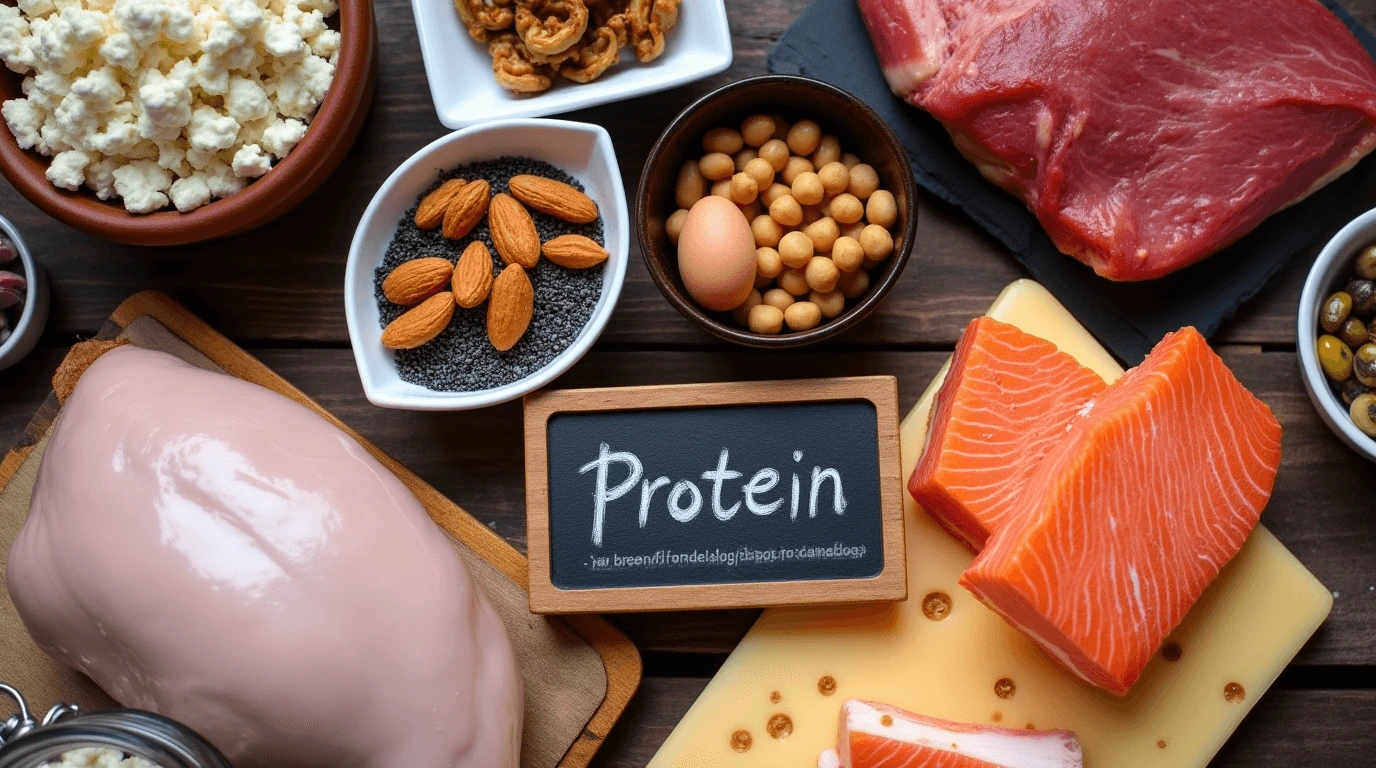
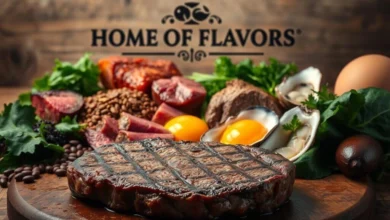
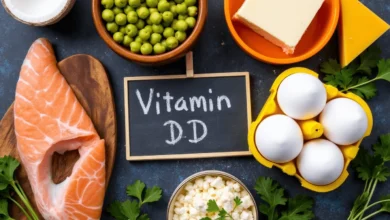
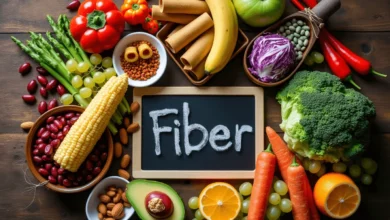
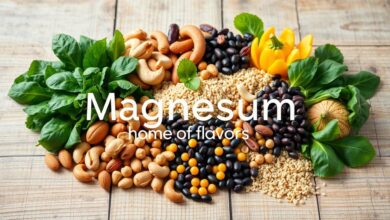
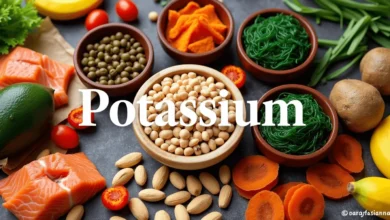
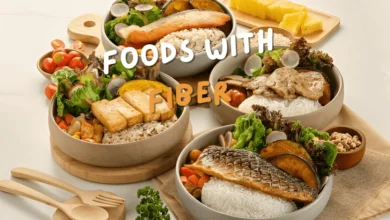
One Comment